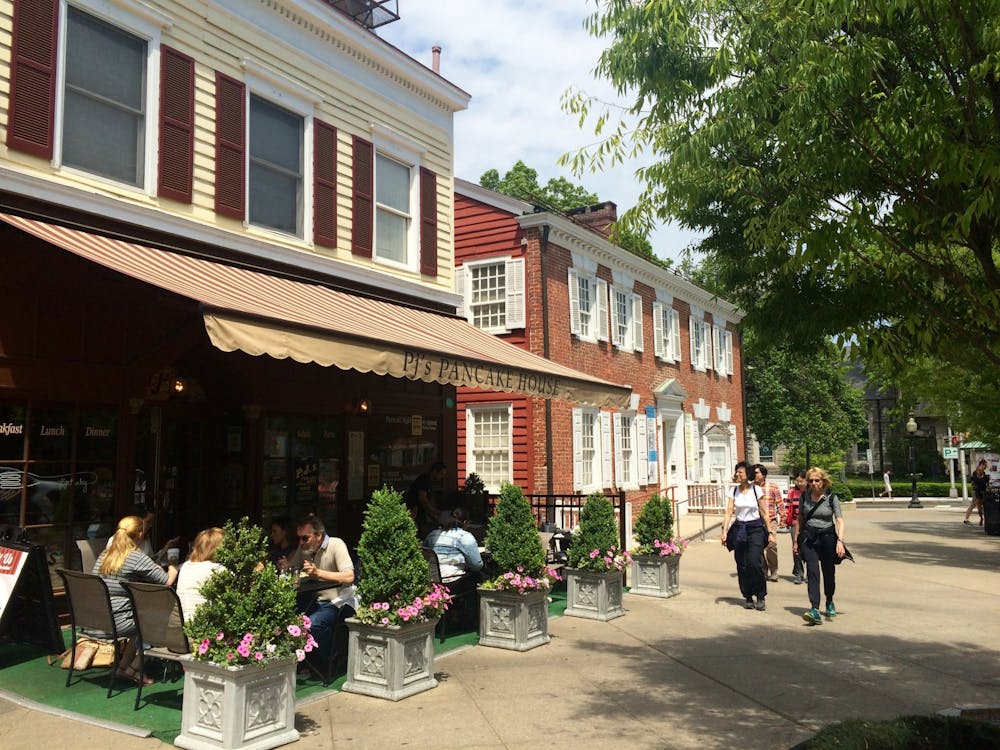In a community of academics that presumably understand the meaning of myopia, it's always amusing to me that we don't recognize one of the greatest shortcomings of our campus: we all take pride in our "beautiful" campus even though the majority of the buildings are either falling apart or absurd. The neo-Gothic buildings are roach infested, leaky and noisy, lack air-conditioning, do a fine job of shutting out natural light and are poorly planned, while the new buildings already look passé in their corny attempt to "modernize" the neo-Gothic. Don't believe me? Have you ever lived in Edwards? Cuyler? Pyne? Scully? Wilson? Butler?! Have you ever looked at Lewis Thomas Lab? Frist? Schultz Lab? The Computer Science building?
After a long succession of heinous Venturi projects, Princeton finally decided to produce some buildings of worth: The Friend Center and The Genomics Institute. Both buildings are aesthetic reflections of a forward-thinking institution. They cater to our technological needs, they provide us with spaces that flow and are conducive to contemplation, they harness natural light, thus saving our already terrible eyesight from further destruction (seriously though, 80 percent of this campus must wear glasses) and they function on principles of design that will never go out of fashion, but will rather age gracefully. They do not attempt to regurgitate past-styles, but rather stand on their own as architecture fit for the needs of the modern academic.
This said, I love to study in the lounge of the Genomics Building. I buy myself a nice and meaty espresso and a croissant and curl up in the plush Herman Miller chairs. Today, however, was different. All of a sudden, a flood of well-dressed adults, many of whom were wearing black plastic-framed glasses, entered the building and started nervously tapping on every surface in sight. I have seen this before. The daughter of an architect, I'm well acquainted with black Alain Mikli glasses and insatiable desires to tap every new material in sight. I was surrounded by architects, and even scarier than that, I was surrounded by architects wearing nametags that gave away their identity as members of the political, corrupt and farcical AIA (American Institute of Architects)! I couldn't run, and I couldn't hide (it's a modern building—there's a lot of free space), so I decided to test my inner strength and sit through their ridiculous chatter about the "integrity" of the building, its "honesty," blah blah blah.
Surprisingly, their attention seemed to be focused on the abominable Frank Gehry conference room rather than on Rafael Viñoly's brilliant plan. They were all mesmerized by that heap of scrap metal—that crass "sculpture" that was probably conceived of by one of Frank's unpaid interns who crumpled up a napkin late one night and called it art. The only thing that slightly redeems the room is that Princeton students were employed to build it. In talking to one of the students who was involved in the building process, two things struck me: 1. He immediately and consistently referred to the conference room as a sculpture 2. He never once mentioned the fact that the room is a mock-up of a room that Frank Gehry designed for a residential project. Is it sculpture or architecture? It seems to me that it is sculptural architecture, just like the rest of Gehry's projects.
This is why I can't stand Gehry's work. Architecture should not be sculptural for the sake of being sculptural; the genius of an architect should be measured by his ability to manipulate function into sculptural form. After all, the purpose of architecture is to provide shelter, not to simply wow the inhabitant with its sexy lines and curves. In "Work of Art in the Age of Reproducibility," Walter Benjamin writes, "the human need for shelter is permanent. Architecture has never had fallow periods. Its history is longer than that of any art, and its effect ought to be recognized in any attempt to account for the relationship of the masses to the work of art." Let architecture stand on its own—it certainly has the capacity to do so.
This is not to say that buildings need to be drab boxes. On the contrary, architecture must be beautiful because "buildings are received in a twofold manner: by use and by perception. Or, better: tactilely and optically," Benjamin said in the aforementioned essay. We should expect from architecture the same qualities we expect from the ideal woman: BEAUTY, BRAINS, HUMOR, WIT, SOUL, and NURTURING. But I suppose that the definition of a good woman is a point of further contention. If you crush the Frank Gehry, the Michael Graves, the Rob Venturi, be prepared to accept Pam Anderson as your ideal woman: vulgar, vapid and ephemeral.







